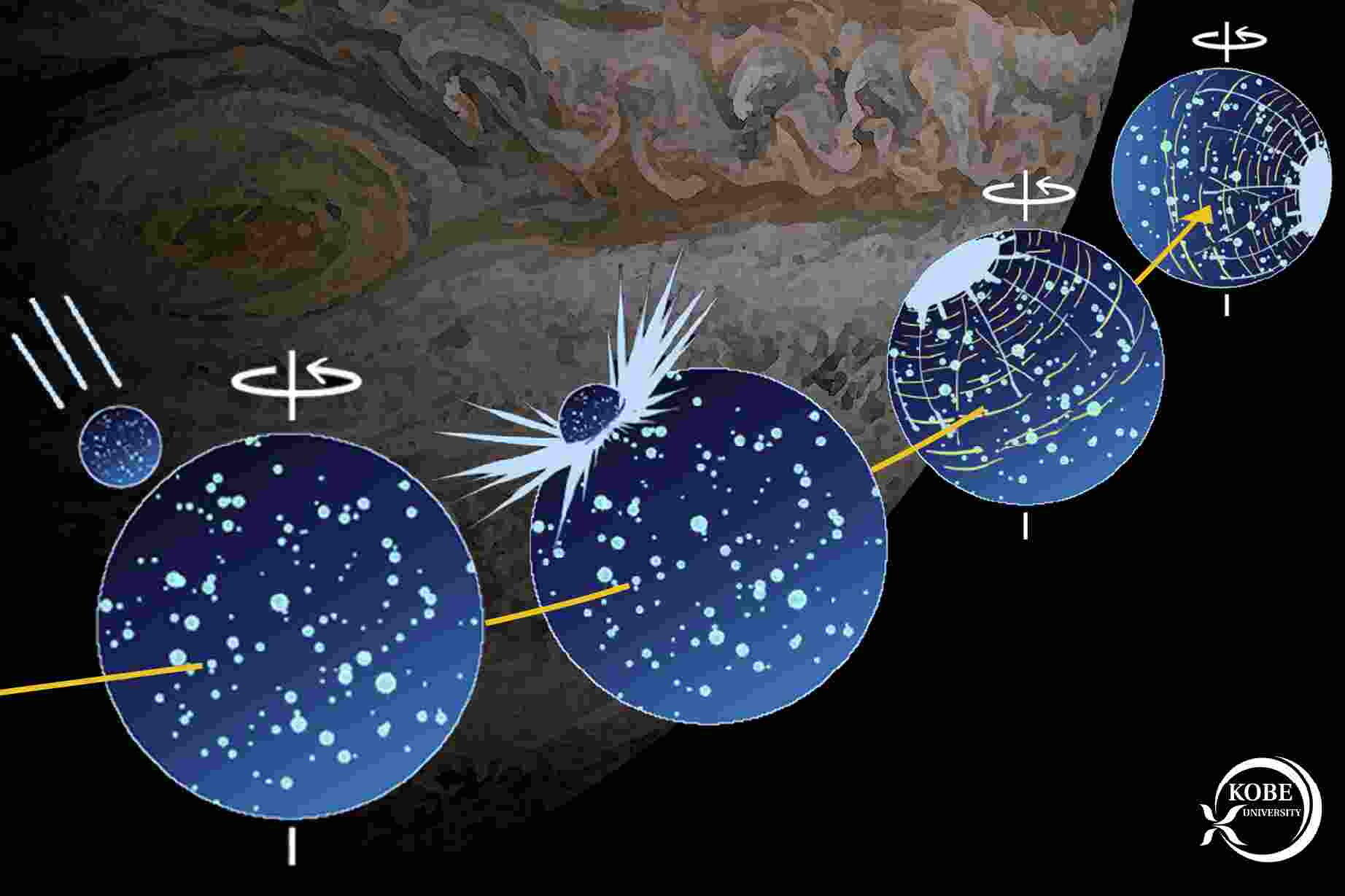THE LATEST
A colossal asteroid impact altered the orbit of the largest moon in the solar system

A recent study from Kobe University in Japan has provided new insights into the impact event that changed the axis of Jupiter's largest moon, Ganymede. Conducted by researcher Naoyuki Hirata, the study demonstrates the significant effect of a massive asteroid collision on Ganymede. The research relied on advanced supercomputer simulations, emphasizing their importance in planetary studies.
Around 4 billion years ago, a huge asteroid, estimated to be 20 times larger than the one that caused the extinction of the dinosaurs on Earth, collided with Ganymede. This collision caused a major shift in the moon's rotational axis. Through advanced supercomputer simulations, Hirata calculated the type of impact that could have resulted in this celestial phenomenon, marking a significant discovery in planetary science.
The study suggests that the impact was likely caused by an asteroid approximately 300 kilometers in diameter, creating a temporary crater spanning between 1,400 and 1,600 kilometers. These findings, based on comprehensive simulations, offer valuable insights into the effects of large cosmic collisions on planetary bodies, highlighting the crucial role of supercomputer technology in unlocking celestial mysteries.
Hirata, known for simulating impact events on moons and asteroids, aims to further explore the origin and evolution of Ganymede. He emphasizes the need for additional research to understand the long-lasting effects of the asteroid collision on the moon's internal evolution, particularly its subsurface oceans' thermal and structural effects.
This research has implications beyond academia, as it could significantly impact future space exploration endeavors. The forthcoming JUpiter ICy moons Explorer (JUICE) mission by the European Space Agency, scheduled to orbit Ganymede in 2034, is expected to use the data obtained to confirm the findings of Hirata's study. The mission aims to shed light on the structural and thermal evolution of Ganymede, potentially addressing important questions posed by the Kobe University researcher.
Hirata's groundbreaking research was made possible with support from the Japan Society for the Promotion of Science and the Hyogo Science and Technology Association, showcasing collaborative efforts driving planetary science forward.
This study showcases the crucial role of advanced supercomputer simulations in understanding celestial events and shaping our knowledge of planetary evolution.
